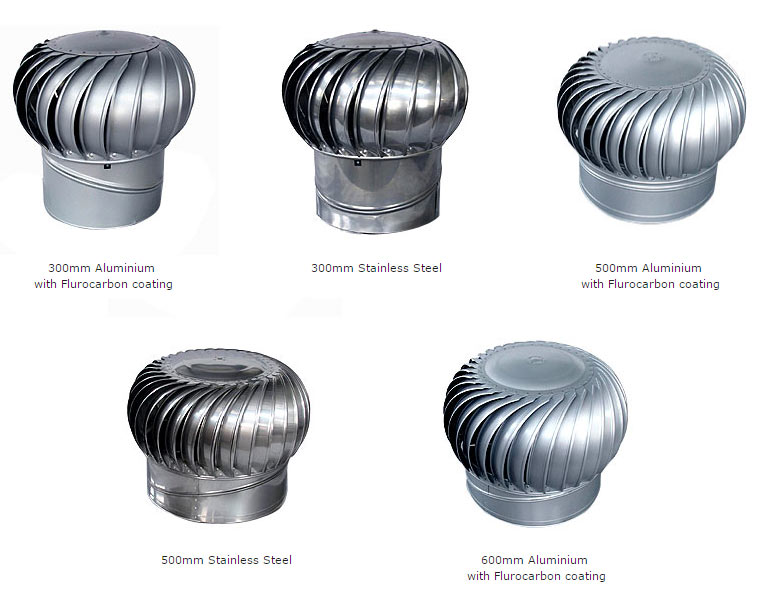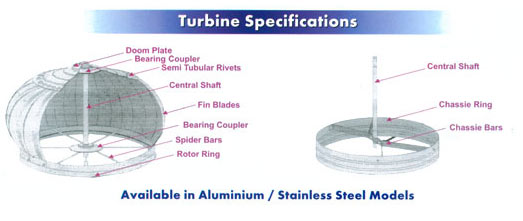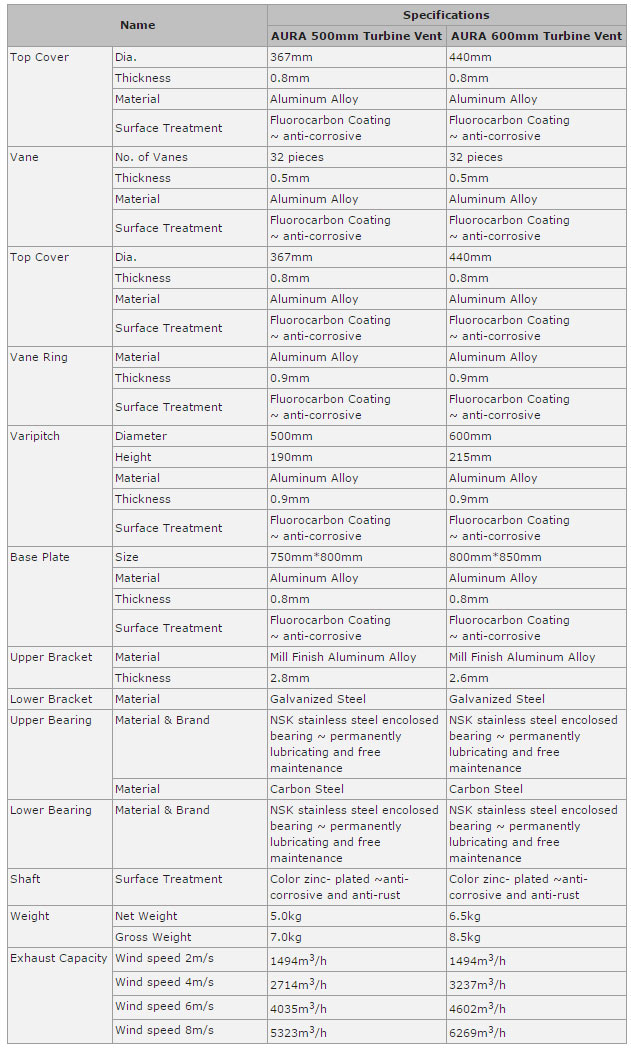 We offer you the latest trend-setter, the Flurocarbon Coated Turbines made from highest quality material,
proved to withstand all the common weather conditions. It comes in three sizes: 300mm, 500mm and 600mm.
A well designed turbine ventilator, takes advantage of the wind to create a positive flow through the throat
of the ventilator. The wind influences the performance of the ventilator in two ways:
We offer you the latest trend-setter, the Flurocarbon Coated Turbines made from highest quality material,
proved to withstand all the common weather conditions. It comes in three sizes: 300mm, 500mm and 600mm.
A well designed turbine ventilator, takes advantage of the wind to create a positive flow through the throat
of the ventilator. The wind influences the performance of the ventilator in two ways:

1. As the wind approaches and strikes the ventilator, it jumps,creating an area of low pressure on the leeward side of the turbine.
This low pressure zone is fed by drawing air from the turbine, causing a continous extraction of air from the building, and
2. As the turbine rotates, the centripetal forces associated with the rotation fling air outwards from the tips of the vanes.
Replacement air is drawn into the throat of the ventilator from the building causing continuous ventilation.
The turbine will even rotate and exhaust in the absence of wind using the thermal current developed within the building.

 A S Bava offers Fibre Glass Base to suite roofs completed with Asbestos sheets as well as Metal
Trafford sheets. This fibre base is capapble of allowing sun light into the factory building thus reducing electricity bill
and at the same time illuminating the interior with natural light.
A S Bava offers Fibre Glass Base to suite roofs completed with Asbestos sheets as well as Metal
Trafford sheets. This fibre base is capapble of allowing sun light into the factory building thus reducing electricity bill
and at the same time illuminating the interior with natural light.
As a general rule, hot or stale air will not exhaust through an opening into which wind can blow. Therefore, regular static ventilators are placed which allow outside wind to enter into the shed. Because of por design or location on the roof it causes back draft. An efficient means of extracting warm and stale air is through roof mounted turbine ventilators, which create postive draft. Adequate low level provision for the entry of fresh air at ambient temperature should be provided.


Turbine ventilator extracts hot and stale air from building by creating a convertion current and draw unwanted air upwards, allow fresh air at ambient temperature.
Once the hot air is removed from building, a new cooler air will replace.This increases workers' productivity as they do not get too exhausted,and it results in better output and more profits.

Turbine ventilator operates utilising the slight energy of the wind,so it saves power cost.Even building that air-condition is installed,the hot air which accumulates above ceiling will be removed.However,the air condition can work at its lesser power consumption.
Turbine ventilator can event extract dampnees in the air out of the building,which results in machine and other electrical system can work at their fullest efficiency and prolongs their life time.


